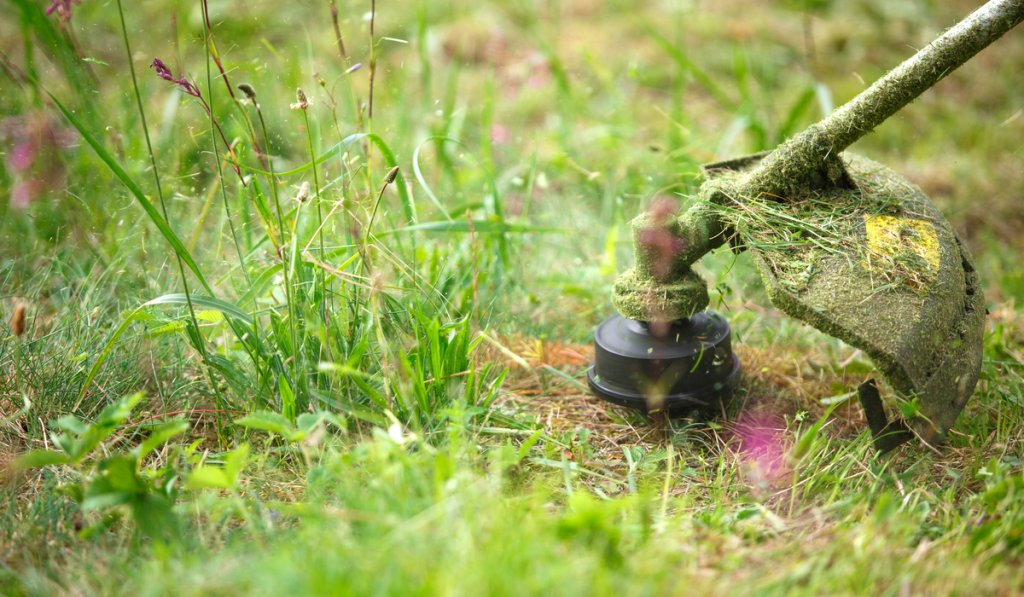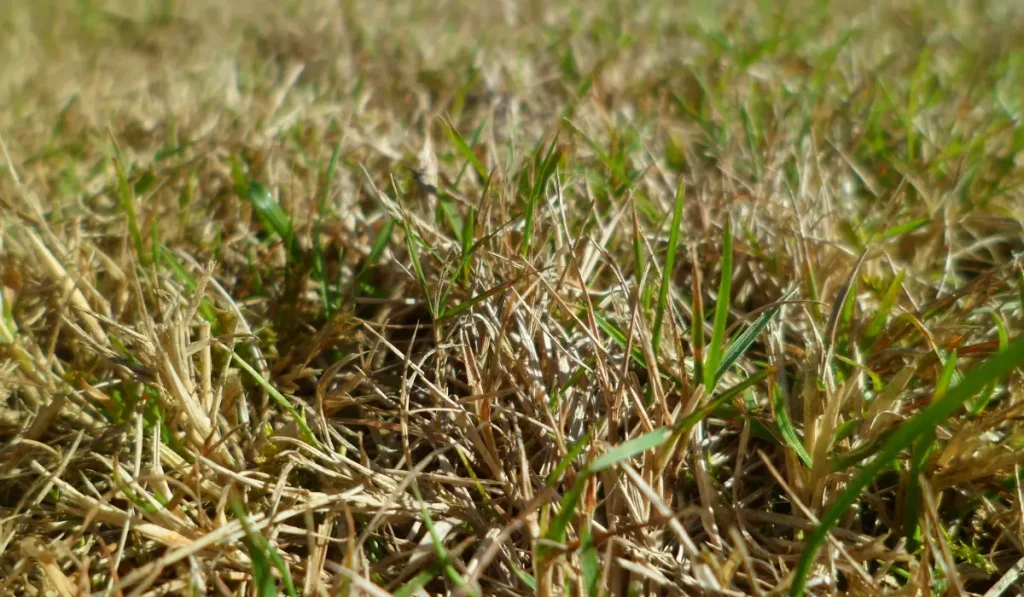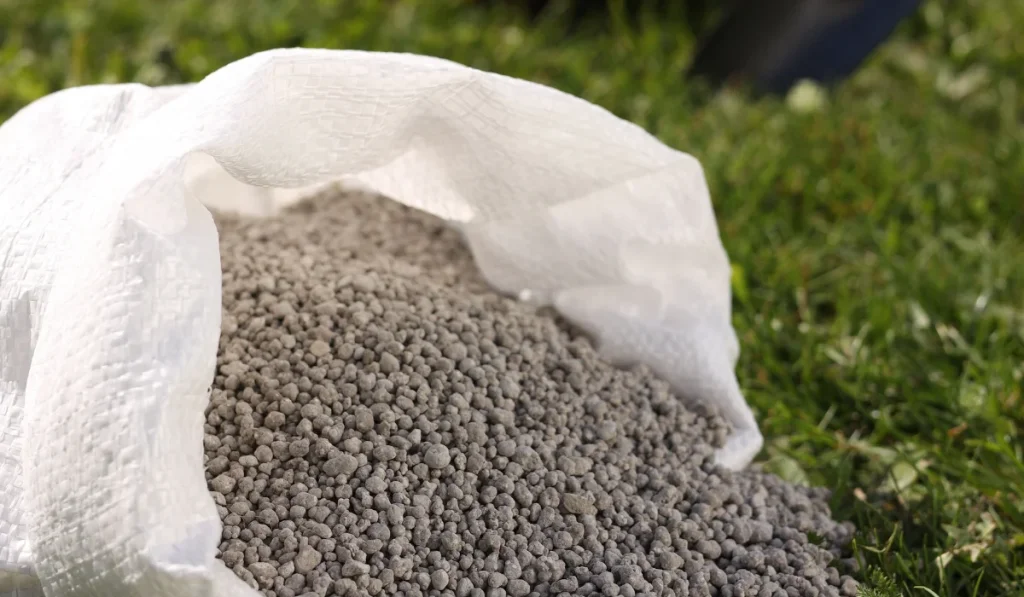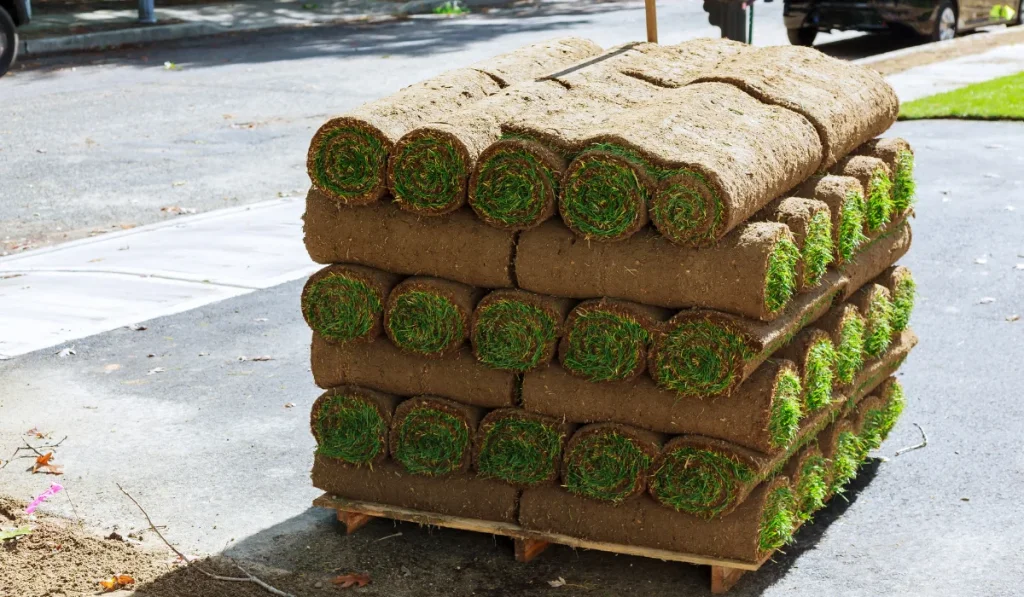We’ve all been taught that when we mow our lawn, the clippings should be bagged up and thrown away. But what if I told you that instead of tossing your grass clippings, you could use them to help fertilize your lawn?
Believe it or not, this is a practice that is gaining in popularity, because it’s a great way to add nitrogen back into the soil.
Keep reading to learn more about using grass clippings as fertilizer.
Key Takeaways
- Grass clippings are rich in nitrogen, potassium, phosphorus, calcium, and other nutrients that are vital for plant growth.
- Throwing grass clippings into the trash not only fills up landfills unnecessarily but is also a waste of a great potential fertilizer for your lawn and garden.
- Grass clippings can instead be used as mulch, a compost additive, a soil amendment, and even a liquid fertilizer.
Let Nature Do Its Thing
If you’re still bagging up your grass clippings and throwing them out in the trash, you’re missing out. There are plenty of ways you can use grass clippings to benefit your garden and lawn, meaning you no longer have to pay to throw them out and you can take advantage of a free, organic resource for your backyard oasis.
Grass clippings are filled with nitrogen, among other key nutrients. Your lawn needs nitrogen in order to produce healthy green growth, so throwing it out makes no sense.
It’s important to note that you must mow relatively frequently if you plan on leaving the grass clippings right on the lawn. If you aren’t mowing at least once a week, the clippings will be too long to leave on the lawn, as they can smother the grass.
If that’s the case, consider mowing more frequently so you can leave them right there, or simply bag the grass up and use it one of the many other ways we’ll describe below.
Myth Buster: Do Grass Clippings Cause Thatch?
Thatch is a layer of dead organic matter that accumulates at the base of the grass, and it can prevent water, air, and nutrients from reaching the roots. While it’s true that thatch can be caused by excessive buildup of organic matter, grass clippings are actually not a major contributor.
In fact, they decompose quickly and help to reduce thatch. The main culprits of thatch are actually heavy fertilizers and overwatering, which lead to an increase in microbial activity.
Mulch and More Mulch
Mulching provides several benefits to gardeners, including nutrients and moisture retention. It can also help keep the soil cool.
Grass clippings win again!
Wood chip mulch is a popular choice among vegetable plants and fruit trees, but it takes a long time to decompose (a benefit, in many cases, if you’re using it as an ornamental accent around your plants).
However, you can use grass clippings to help provide your plants with nutrients more quickly than you might with wood chips. The nutrients will flow down through the chips into the soil and get to your plants ASAP.
How to Use Grass Clippings as Mulch
You can use fresh green grass clippings on mature plants, but for young seeds and seedlings, consider using dried grass clippings. These won’t suffocate delicate young plant roots like fresh green clippings will, but they will help to suppress weed growth and keep the soil nice and cool (and hydrated).
Fresh green clippings can clump together and form a thick mat, which can interfere with the oxygen and water transportation into the soil – again, waiting until the clippings are dry can help provide all the necessary benefits for your plants without any of the detriments.
As your plants get older, you can mix in some fresh green clippings as well to provide your plants with the nitrogen they need for growth.
Grass clippings can be used in all kinds of areas, including raised beds, containers, and even plants grown directly in the ground. They’re especially beneficial in containers, which tend to dry out more quickly, as they can help retain moisture.
As a mulch, again, grass clippings break down quickly and will release nutrients into the soil early on. As you amend your beds later in the season, you won’t have to worry about taking off any excess mulch—it will already be mostly gone and can be simply worked back into the soil.
If you have used any chemicals on your grass, such as a fertilizer or herbicide, don’t use the mulch on your plants for at least 60 days. This will eliminate the likelihood of residues contaminating your garden. Remember, chemicals are designed to kill plants that are not grass, and that includes vegetable plants. Give it time!
If your lawn has a lot of weeds, like dandelions or clover, you may want to skip using the clippings on your garden. These contain weed seeds that can cause the same weeds to proliferate around your vegetable plants.
It’s also important not to overdo it with grass clippings. If you pile them on too thick, they will begin to rot, which can actually damage your plants. A thin layer (about one inch) of grass clippings is all you need to give your garden a boost. Once that first layer dries, you can put down another layer directly on top.
When to Put Down Grass Clippings as Mulch
In early spring, allow the sun to warm up your beds. You won’t need to mulch since there won’t be a lot of weeds yet and the weather will still be cool.
Generally speaking, late spring is a good time to put down mulch. This will allow the soil to warm up and give you time to fully mulch.
The mulch will keep moisture in and prevent the sun from baking the soil surface as the summer heats up.
Heat Things Up (In Your Compost Bin)
When it comes to composting, green and brown materials play an important role. Green materials, like fresh grass clippings, are rich in nitrogen, while brown materials, like dried grass, are high in carbon. The right balance of these two materials is essential for creating healthy compost.
Nitrogen helps to encourage the growth of bacteria and fungi, which break down organic matter and release nutrients into the soil. Carbon, on the other hand, provides structure and aeration for the compost pile. It also helps to absorb excess moisture and prevent odor.
When adding grass clippings to your compost, consider using both fresh green clippings as well as dry brown ones. This will encourage the right balance of nutrients in your bin.
When you throw grass clippings into your compost, make sure you turn the grass in fully. If you just throw it on top, you’ll miss out on some of the benefits of using them. The pile will dry and mat up, preventing some water and oxygen from getting into the pile.
By working the nitrogen-rich clippings deep into the pile, however, you’ll spread this beneficial nutrient throughout the bin and really accelerate the decomposition process in your compost.
Try Mixing Things Up (Literally)
An often overlooked way to use grass clippings is to mix them directly into the soil. This has a number of benefits.
First, it provides a source of nutrients for the soil, which can be particularly beneficial in areas where surface fertilization is not possible or practical.
Second, it helps to improve the structure of the soil, making it more porous and better able to retain moisture. It also helps to aerate the soil, which can encourage the growth of healthy bacteria and fungi.
One way to help prevent soil erosion is to mix fresh grass clippings directly into the soil. This helps to hold the soil in place and provides a source of nutrients for the plants. Additionally, mixing grass clippings into the soil helps to improve drainage and aeration, which are both essential for healthy plant growth.
Liquid Fertilizer
Grass contains a large amount of nitrogen, of course, but it is also high in potassium, phosphorus, and even calcium. You can use grass to make your own liquid fertilizer (also known as JADAM).
JADAM liquid fertilizer (JLF for short) is made by adding grass clippings to water and allowing the mixture to steep for several weeks.
To do it, start with a plastic tub. You may want to line the tub with a compost bag or similar material to exclude the light. This will allow the microbes to really thrive. You’ll need a lid for the tub, too.
Place some grass into the tub. Fill it nearly to the top, pressing down to make sure the container is about 75% full. Use rainwater to cover just above the grass. Then, sprinkle some leaf mold or compost on top. This will “inoculate” the mixture and get the microbes going. Cover the tub and wait two weeks. You can then start using it in your garden, straining out the individual grass and just using the liquid to irrigate the plants.
To use JADAM liquid fertilizer, simply mix it with water (two parts fertilizer to one part water) and apply it to the roots of plants. This simple process can help to ensure that your plants are getting the nutrients they need to thrive.
People Are Also Asking
Can I throw grass clippings in the garbage?
Many people assume that grass clippings can be thrown in the garbage, but this is actually not a good idea. Grass clippings can take up a lot of space in a landfill, and they release methane gas as they decompose. Methane is a greenhouse gas that contributes to climate change. In addition, throwing grass clippings in the garbage means that they will not be available to be used as compost. Composting grass clippings helps to create a nutrient-rich soil amendment that can be used to improve the health of your lawn and garden.
Will grass clippings help bare spots?
Yes. You can simply spread a layer of grass clippings over the bare spot. The clippings will help to hold moisture in the soil and protect the seeds from being eaten by birds. In addition, the grass clippings will decompose quickly, releasing nutrients that will help the new grass to grow.



